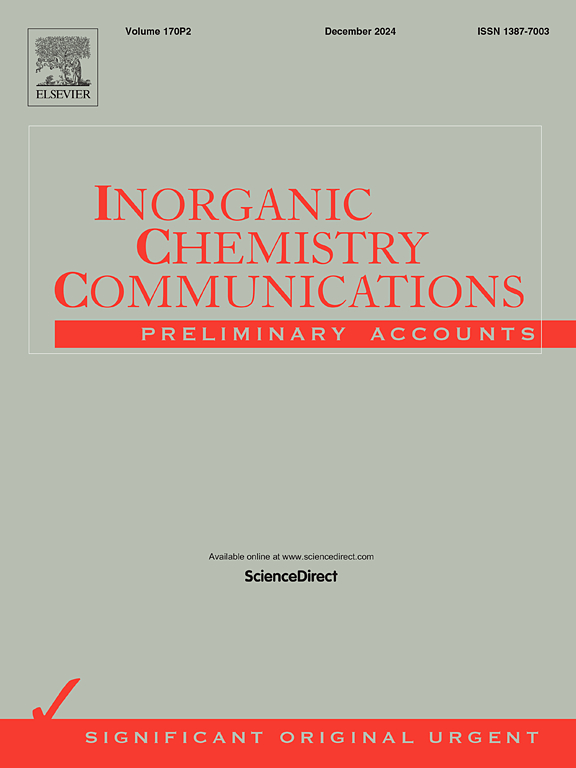A new core-shell heterojunction MIL-53(Fe)@ZnIn2S4 for boosted photocatalytic degradation of tetracycline and reduction of Cr (VI) under visible irradiation
IF 4.4
3区 化学
Q1 CHEMISTRY, INORGANIC & NUCLEAR
引用次数: 0
Abstract
Tetracycline (TC) and hexavalent chromium (Cr(VI)) in the environment pose potential threats to ecosystems and human health, and have attracted widespread attention in recent years. Photocatalysis has been proven to be an ideal technology for removing TC and Cr(VI) in water. Herein, a new core–shell type II heterojunction MIL-53(Fe)@ZnIn2S4 was synthesized by using low-temperature oil bath method to effectively remove TC and Cr (VI) in aqueous solutions. MIL-53(Fe)@ZnIn2S4 was characterized by SEM, XPS, XRD, and FT-IR. The photocatalytic activity and stability of the composite were evaluated via photocatalytic experiments, and the mechanisms of TC degradation and Cr (VI) reduction were also explored. The results indicate that the specific surface area of MIL-53(Fe)@ZnIn2S4 is significantly higher than that of MIL-53(Fe) and ZnIn2S4 due to the core–shell structure being formed. The heterojunction interface and core–shell structure synergistically promote the transfer and separation of photogenerated electrons and holes at the interface between MIL-53(Fe) and ZnIn2S4. MIL-53(Fe)@ZnIn2S4 appears excellent photocatalytic activity and stability towards both TC and Cr (VI). The composite MZ20 with a mass ratio of 2:10 between MIL-53 (Fe) and ZnIn2S4 exhibits the best photocatalytic activity. The photocatalytic degradation efficiency of MZ20 to TC reach 92 % within 120 min, and the photocatalytic reduction efficiency to Cr (VI) reach 99 % within 30 min. The boosted photocatalytic activity is owing to the construction of type II heterojunction with core–shell structure, which effectively suppresses the recombination of photogenerated electron-hole pairs. This work aims at providing a new strategy for the construction of visible light responding photocatalysts for the remediation of chromium and tetracycline contaminated environments.

求助全文
约1分钟内获得全文
求助全文
来源期刊

Inorganic Chemistry Communications
化学-无机化学与核化学
CiteScore
5.50
自引率
7.90%
发文量
1013
审稿时长
53 days
期刊介绍:
Launched in January 1998, Inorganic Chemistry Communications is an international journal dedicated to the rapid publication of short communications in the major areas of inorganic, organometallic and supramolecular chemistry. Topics include synthetic and reaction chemistry, kinetics and mechanisms of reactions, bioinorganic chemistry, photochemistry and the use of metal and organometallic compounds in stoichiometric and catalytic synthesis or organic compounds.
 求助内容:
求助内容: 应助结果提醒方式:
应助结果提醒方式:


